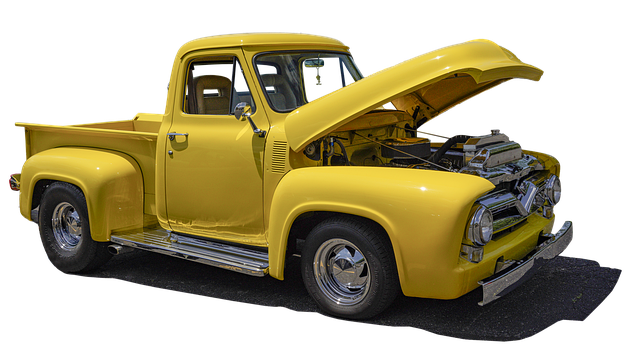Register Car California: DMV VIN Verifier Guide
“Looking to register your car in California? Our comprehensive guide breaks down the process step-by-step. From understanding key requirements, to gathering essential documents, visiting the DMV, veri…….

“Looking to register your car in California? Our comprehensive guide breaks down the process step-by-step. From understanding key requirements, to gathering essential documents, visiting the DMV, verifying your vehicle’s VIN (using a trusted dmv vin verifier), and paying fees – we’ve got you covered. Streamline your car registration today and hit the road with confidence.”
- Understand California Car Registration Requirements
- Gather Necessary Documents for Registration
- Visit Your Local DMV and Complete Application
- Verify Vehicle Identification Number (VIN) Accuracy
- Pay Registration Fees and Receive Your Plate
Understand California Car Registration Requirements

Before registering your car in California, it’s crucial to understand the state’s specific requirements. The California Department of Motor Vehicles (DMV) mandates that all vehicles operating within the state be properly registered and bear valid license plates. One key component of this process is ensuring your vehicle’s Vehicle Identification Number (VIN) is accurately verified. This is typically done through a DMV VIN verifier, which checks the VIN against the manufacturer’s records to confirm the car’s authenticity and history.
Additionally, for added convenience, many residents opt for mobile VIN inspection or mobile VIN verification services. These allow you to complete the initial verification process from the comfort of your home or office, saving time and effort. By adhering to these requirements, you’ll ensure a smooth car registration experience in California.
Gather Necessary Documents for Registration

Before you begin the registration process, it’s crucial to gather all the essential documents required by the California Department of Motor Vehicles (DMV). This includes your vehicle’s registration certificate from the previous state, a completed application form, and proof of insurance. Additionally, you’ll need to provide a valid driver’s license or state ID card and pay the registration fee.
One important step is to obtain a Vehicle Identification Number (VIN) inspection using a DMV-approved vin verifier. This can be done through a mobile vin verification service for added convenience. Ensure your vehicle passes the inspection, as it verifies the vehicle’s history and ensures it meets safety standards. A clean VIN report will streamline the registration process significantly.
Visit Your Local DMV and Complete Application

To begin the process of registering your car in California, start by visiting your local Department of Motor Vehicles (DMV) office. This is a crucial step as it allows you to interact with officials and complete necessary paperwork. Upon arrival, locate the appropriate counter for vehicle registration and gather all required documents, including proof of ownership, current insurance card, and a valid driver’s license.
One important task during this visit is to have your Vehicle Identification Number (VIN) verified. Many DMVs now offer mobile VIN verification services, which can be a convenient option as it allows you to check the vehicle’s history and ensure its authenticity without having to wait for an appointment or travel to a different location. This process plays a vital role in ensuring that only legal and safe vehicles are registered on California roads.
Verify Vehicle Identification Number (VIN) Accuracy

Before initiating the car registration process in California, it’s crucial to ensure your vehicle’s Vehicle Identification Number (VIN) is accurate and valid. This number acts as a unique fingerprint for your car, critical for identification and verification purposes. A precise VIN ensures that you’re registering the correct vehicle, preventing potential issues later.
A reliable method to verify your VIN is by utilizing a DMV vin verifier or even a mobile vin verifier. These tools facilitate a quick and easy inspection process, allowing you to cross-check the VIN with official databases. Moreover, some services offer vin inspection through digital platforms, ensuring convenience and accuracy in a few simple steps, which can be especially beneficial when preparing your registration documents.
Pay Registration Fees and Receive Your Plate

After verifying your vehicle’s information through a DMV VIN verifier or a mobile VIN inspection, the next step is to pay the registration fees. The cost can vary based on factors like the type of vehicle and its age. You can typically pay online, by mail, or in person at a California DMV office. Once you’ve settled the fees, you’ll be issued a registration certificate and, in most cases, your personalized license plate.
Ensure that all details are accurate before finalizing the process. Many people choose to have their plates installed professionally, while others may opt for a DIY approach. Regardless of how you choose to receive and install your plates, having them securely fastened is crucial. This step completes the registration process, making your vehicle legally compliant on California roads.
Registering a car in California is a straightforward process, ensuring your vehicle is legal to drive on state roads. By understanding the requirements, gathering essential documents, and completing the application at your local DMV, you can efficiently navigate the registration procedure. A crucial step involves verifying the Vehicle Identification Number (VIN) using a trusted dmv vin verifier to maintain accuracy. Once all fees are paid, you’ll receive your custom license plate, marking the successful completion of your car registration journey.







